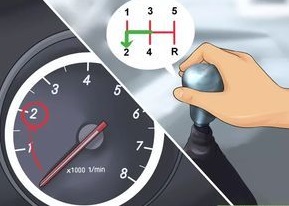Driving vehicles is a necessary part of modern life, but it also has a significant impact on the environment and our natural resources. One way to minimize this impact is to drive in a way that saves fuel and reduces emissions. Here are some tips to help you do just that:
-
Plan your route: Before you hit the road, take a moment to plan the most efficient route to your destination. This will help you avoid traffic and unnecessary detours, which can save both time and fuel.
-
Drive at a steady pace: Accelerating quickly and braking suddenly can waste a lot of fuel. To maximize fuel efficiency, try to maintain a steady pace and anticipate traffic lights and stop signs.
-
Use cruise control: When you're driving on the highway, using cruise control can help you maintain a steady speed and reduce the amount of fuel you use.
-
Avoid idling: If you're going to be stopped for more than a minute or two, it's more fuel-efficient to turn off your engine rather than letting it idle.
- Keep your vehicle well-maintained: Regular maintenance, such as keeping your tires properly inflated and your engine in good working order, can help improve fuel efficiency and reduce emissions.
-
Reduce weight: Carrying unnecessary weight in your vehicle can increase fuel consumption. So, avoid carrying heavy loads and remove unnecessary items from your trunk.
-
Use Eco-friendly mode: Many modern cars come with an Eco-friendly mode, which adjusts the car's performance to maximize fuel efficiency.
-
Carpool or use public transportation: Whenever possible, try to carpool or use public transportation to reduce the number of vehicles on the road.
By following these tips, you can help reduce your impact on the environment and save money on fuel. Not only you will be reducing your own carbon footprint but also helping the planet to be a better place for future generations.
In addition to the tips mentioned above, there are a few other things you can do to save fuel and reduce your impact on the environment:
-
Choose a fuel-efficient vehicle: If you're in the market for a new vehicle, consider choosing one that is more fuel-efficient. Cars with smaller engines, hybrid or electric vehicles, and those with aerodynamic designs typically use less fuel and emit fewer emissions than larger vehicles.
-
Use the right oil: Using the right oil for your vehicle can help improve fuel efficiency. Look for oils with a "Energy Conserving" label, which means they contain friction-reducing additives that can help improve fuel economy.
-
Limit your use of air conditioning: Using the air conditioning in your vehicle can increase fuel consumption by as much as 20%. To minimize this impact, try to limit your use of air conditioning, and open the windows instead when you're driving at slower speeds.
-
Avoid excessive speed: Driving at high speeds can significantly increase fuel consumption. Try to stay within the posted speed limit, and you'll save fuel and reduce emissions.
-
Check tire pressure regularly: Properly inflated tires can improve fuel efficiency by as much as 3%. Make sure to check your tire pressure at least once a month and keep them properly inflated.
-
Use fuel-efficient driving techniques: there are certain driving techniques that can help improve fuel efficiency, such as using "pulse and glide" method where you accelerate to a certain speed, then ease off the gas and coast until you need to accelerate again.
By following these tips, you can help save fuel, reduce emissions, and minimize your impact on the environment. It is important to remember that every small step we take can make a big difference in the long run.
In addition to these tips, it is also important to support government policies and regulations that promote the use of fuel-efficient and low-emission vehicles. Encourage the government to invest in alternative energy sources, and support the development of infrastructure for electric vehicles.






